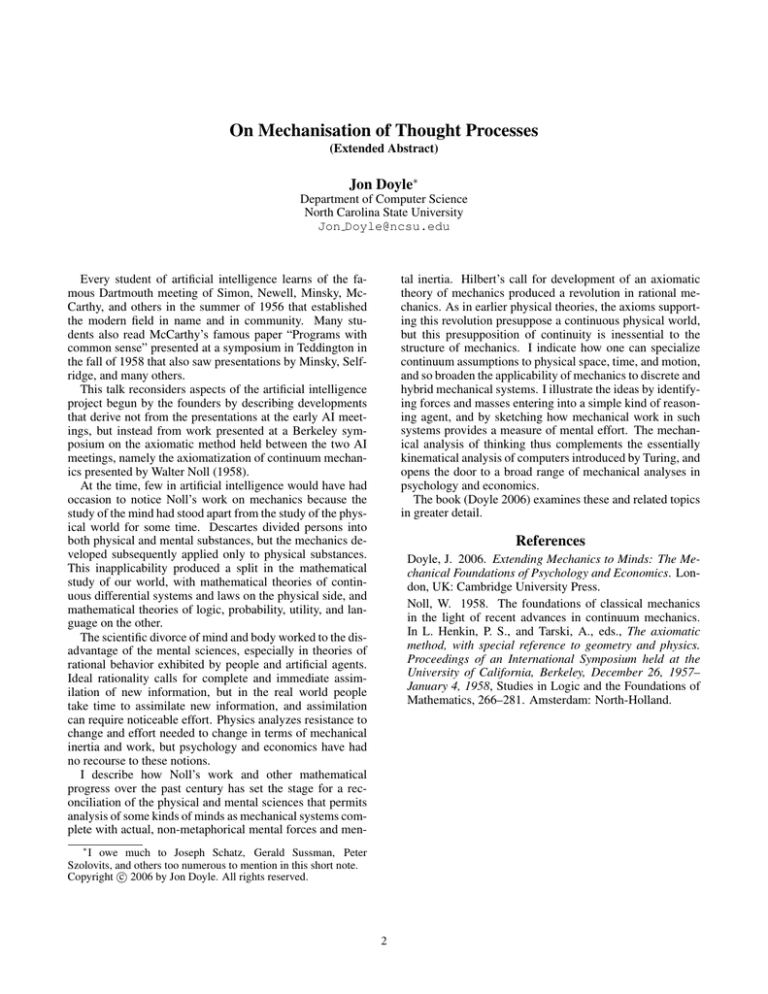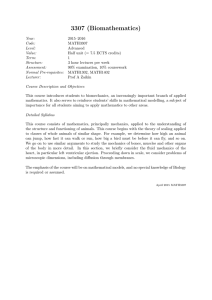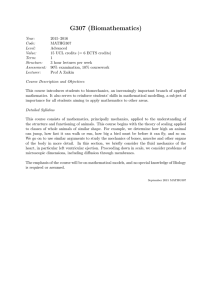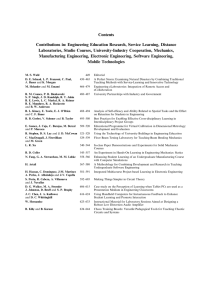
On Mechanisation of Thought Processes
(Extended Abstract)
Jon Doyle∗
Department of Computer Science
North Carolina State University
Jon Doyle@ncsu.edu
Every student of artificial intelligence learns of the famous Dartmouth meeting of Simon, Newell, Minsky, McCarthy, and others in the summer of 1956 that established
the modern field in name and in community. Many students also read McCarthy’s famous paper “Programs with
common sense” presented at a symposium in Teddington in
the fall of 1958 that also saw presentations by Minsky, Selfridge, and many others.
This talk reconsiders aspects of the artificial intelligence
project begun by the founders by describing developments
that derive not from the presentations at the early AI meetings, but instead from work presented at a Berkeley symposium on the axiomatic method held between the two AI
meetings, namely the axiomatization of continuum mechanics presented by Walter Noll (1958).
At the time, few in artificial intelligence would have had
occasion to notice Noll’s work on mechanics because the
study of the mind had stood apart from the study of the physical world for some time. Descartes divided persons into
both physical and mental substances, but the mechanics developed subsequently applied only to physical substances.
This inapplicability produced a split in the mathematical
study of our world, with mathematical theories of continuous differential systems and laws on the physical side, and
mathematical theories of logic, probability, utility, and language on the other.
The scientific divorce of mind and body worked to the disadvantage of the mental sciences, especially in theories of
rational behavior exhibited by people and artificial agents.
Ideal rationality calls for complete and immediate assimilation of new information, but in the real world people
take time to assimilate new information, and assimilation
can require noticeable effort. Physics analyzes resistance to
change and effort needed to change in terms of mechanical
inertia and work, but psychology and economics have had
no recourse to these notions.
I describe how Noll’s work and other mathematical
progress over the past century has set the stage for a reconciliation of the physical and mental sciences that permits
analysis of some kinds of minds as mechanical systems complete with actual, non-metaphorical mental forces and men-
tal inertia. Hilbert’s call for development of an axiomatic
theory of mechanics produced a revolution in rational mechanics. As in earlier physical theories, the axioms supporting this revolution presuppose a continuous physical world,
but this presupposition of continuity is inessential to the
structure of mechanics. I indicate how one can specialize
continuum assumptions to physical space, time, and motion,
and so broaden the applicability of mechanics to discrete and
hybrid mechanical systems. I illustrate the ideas by identifying forces and masses entering into a simple kind of reasoning agent, and by sketching how mechanical work in such
systems provides a measure of mental effort. The mechanical analysis of thinking thus complements the essentially
kinematical analysis of computers introduced by Turing, and
opens the door to a broad range of mechanical analyses in
psychology and economics.
The book (Doyle 2006) examines these and related topics
in greater detail.
References
Doyle, J. 2006. Extending Mechanics to Minds: The Mechanical Foundations of Psychology and Economics. London, UK: Cambridge University Press.
Noll, W. 1958. The foundations of classical mechanics
in the light of recent advances in continuum mechanics.
In L. Henkin, P. S., and Tarski, A., eds., The axiomatic
method, with special reference to geometry and physics.
Proceedings of an International Symposium held at the
University of California, Berkeley, December 26, 1957–
January 4, 1958, Studies in Logic and the Foundations of
Mathematics, 266–281. Amsterdam: North-Holland.
∗
I owe much to Joseph Schatz, Gerald Sussman, Peter
Szolovits, and others too numerous to mention in this short note.
c 2006 by Jon Doyle. All rights reserved.
Copyright 2






